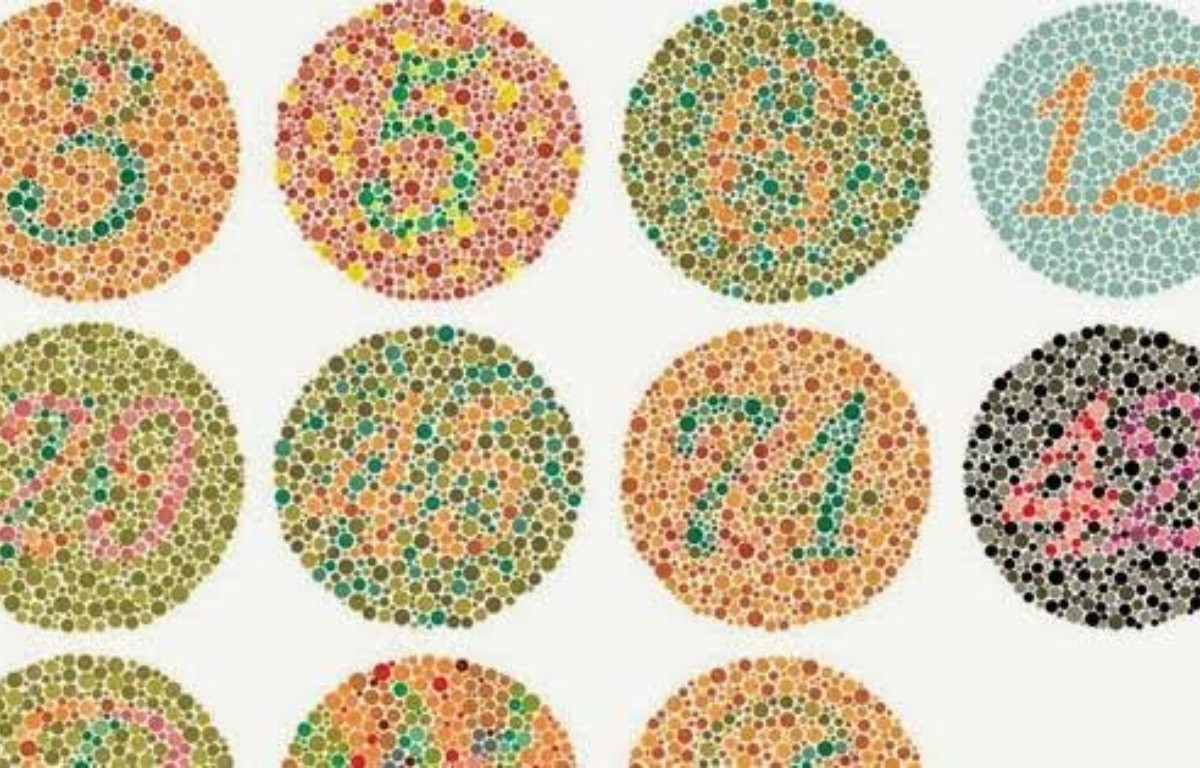Color blindness is a common disease that simply means poor color vision or the inability to differentiate between a group of certain colors. professionals gives This common term to anyone who has a poor color vision. But true color blindness is where the patient sees everything in black and white, and by the way, it is rare.
Is color blindness hereditary?
In general, color blindness is hereditary and not otherwise. It is very common for males to be born color blind. They cannot differentiate between green, red and blue. But this is not common. Common in this disease is the inability to distinguish between shades of blue and yellow.
How does a person with color blindness look?
Note: Some medications can cause color blindness.
What are the colors that color-blind people do not see?
Depending on the level of the disease, some cannot see shades of yellow and blue. When the disease is very severe, everything is seen in black and white.
Symptoms of color blindness
- Decreased color vision.
- You may have trouble distinguishing colors in a traffic light or interpreting color-coded educational materials.
- Inability to see blue and yellow colors.
- Inability to see any colors.
How does the eye see natural colors?
Seeing colors across the sunshine spectrum could be a advanced method that begins together with your eyes’ ability to reply to totally different wavelengths of sunshine. . Light, which contains all color wavelengths, enters your eye through the cornea and passes through the lens and the clear, jelly-like tissue in your eye (the vitreous) to the wavelength-sensitive cells (cones) at the back of the eye in the macular region of the eye. Retina. The cone is sensitive to the short blue, green or long red wavelengths of light. The chemicals in the cones trigger a reaction and send wavelength information through the optic nerve to your brain. And if your eyes are normal, you perceive color. But if your cones lack one or more wavelength-sensitive chemicals, you won’t be able to distinguish the colors red, green, or blue.
Types of color blindness
There are 3 types of color blindness at all:
- Red-green color
blindness The most common color blindness caused by familial causes is damage or decreased red pigment function or green pigment function. There are four types of color blindness, red and green.
- Protanomaly – this color blindness is caused by the unusual presence of red cone pigments. The patient sees the colors are not bright. Red, yellow, and orange are also seen as if they were only green. This condition is benign and does not usually affect daily life.
- Protanopia – in this case of color blindness, the pigments of the red cone stop working, and the red color appears black. Some variants of orange, yellow, and green are all shown in yellow.
- Deuteranomaly – Deuteranomaly – Very common type. It has an unusual green conical hue. Yellow and green appear red in this, and purple and blue are hard to spot. This condition is benign and does not usually affect daily life.
- Deuteranopia – In this case of color blindness, the green cone pigments stop working. They see red as brown, yellow, green, and dark yellow.
-
Blue and yellow color blindness Blue and yellow
color blindness is much rarer than red and green color blindness. In this, The pigment in the blue cone is absent, or has poor function. There are two types of color blindness, blue and yellow.
- Tritanomaly – blue cone pigments have a lower function. Blue appears green, and pink yellow, and red are not easily distinguished.
- Tritanopia – People with Tritanopia lack blue deceptive cells. Blue appears green, and yellow appear purple or light brown.
color blindness (monochromacy)
People with complete there are two types of monochromatism –
cone monochromatism – in this, two or three of the three cone cell pigments do not function. Monochromatic people have difficulty distinguishing colors because the brain needs signals from different types of cones to see colors. This comparison is not possible when only one type of offense operates.
Monochrome Rod – It is present from birth. It does not contain any of the available cone cell pigments. People with one penis color see the world in black, white, and gray. People with penile monochromaticity suffer from photophobia and are very uncomfortable in bright environments.
Causes of color blindness?
a genetic disorder. Inherited color deficiency is more common in males than in females. Red and green deficiencies are the most common, with blue and yellow deficiencies being less common. It’s rare to not have a color vision at all.
- The patient can inherit all three levels of color blindness: severe, moderate, or mild. Inherited color deficiency usually affects both eyes, and its severity does not change throughout your life.
- Pathological conditions: The patient can develop color blindness in some cases, such as leukemia, Alzheimer’s, diabetes, sickle cell anemia, macular degeneration, or glaucoma. One eye may be affected more than the other, and the lack of color may improve if the underlying disease can be treated.
- certain medications. Some medications can alter color vision, such as some medications that treat certain autoimmune diseases, heart problems, high blood pressure, erectile dysfunction, infections, neurological disorders, and psychological problems.
- Aging. Old age, where the ability to see colors well weakens.
- Chemicals. Exposure to certain chemicals in the workplace, such as carbon disulfide and fertilizers, can cause loss of color vision.
Can Doctor treat color blindness?
Treatment for most types of color blindness has no cure if the color vision problem is not closely related to certain medications or eye diseases. Not taking the medication causing the vision problem can cause your color vision to fully improve.
Test Are you color blind?
- There are many ways to test for color vision defects, but the Ishihara panel test is a standard method. He will test for red and green color blindness. This test is most likely used to see regular colors in government jobs, schools, or medicine.
- The Ishihara test includes 38 circuit boards generated by unique random points of more than one color. The place will be shown to the person and asked what number will appear on the board.
- Some panels contain information that people with typical color blindness can see. On the other hand, other panels contain information that only color-blind people should understand or see.
- If someone makes some mistakes during the test, they are diagnosed with color blindness. Special panels are used to diagnose color blindness in children.
Color-blind lenses and eyeglasses
- Opticians supply tinted speckled lenses or red single contact lenses to improve color vision. Color blindness is caused by problems with the cone, which leads to increased interference of wavelengths, which in turn leads to poor color vision.
- Color blindness glasses contain tinted lenses that help a person and give the ability to see more colors accurately. The glasses use a filter to cut off interfering wavelengths, allowing the user to give more accurate color discrimination.
- Colorblind glasses also have many applications in everyday life, such as choosing clothes with perfect color patterns. It also helps a person to grow in their color-related profession, such as designing graphics and work profiles that require dealing with many electrical wires that contain a lot of colors that depend on correct color perception.
Can patients with drive?
- Firstly Driving is a more complex skill that allows people to navigate roads safely and get to work, school, and other essential destinations.
- However, not everyone has this ability. Some people have color blindness, which makes it difficult to differentiate between certain colors and color combinations.
- Secondly Many have wondered if color-blind drivers are safe on the road, but that question depends on their particular type of color blind .
- Thirdly For example, color blind can be detected with a simple online test, and other types may require more sophisticated eye exams or genetic testing.
- most importantly Regardless of the cause, all color-blind drivers can benefit from being extra careful behind the wheel and being especially vigilant when driving in low-light conditions or unfamiliar environments. Ultimately, driver safety is more than just that.
What is the incidence in the world?
color blind affect approximately 10% of the population, with varying levels of severity. Most color-blind individuals are partial color-blind, which means that they have some level of difficulty distinguishing colors but are still able to see color in most situations. However, some people have a true and complete lack of color vision, which means they can’t see colors at all and only see the world in shades of gray. Although this condition is very rare, many patients learn to adapt and find creative ways to compensate for their lack of color.


